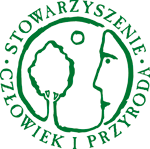Actions in year 2020
On February 27, 2020 in Kosewo, the second of the lower passage systems for small vertebrate animals planned in the Warmian-Masurian Voivodeship was received.
Built on the 452-meter section of the national road No. 16 near the town of Kosewo, the system consists of 7 tunnels with a total length of 84 m, guiding barriers with a total length of 870 m and 30 m long stop-grids.
On 12.03.2020, works involving the reconstruction of habitats for the European pond turtle in the area of the Mazurska Ostoja Żółwia Baranowo were made.
The work included restoring the habitat of the European pond turtle in the form of a shallow reservoir with an area of 300-500 m2 and two water reservoirs with a total area of about 2600 m2 (the location of these reservoirs and their technical parameters were determined on the basis of hydrological opinions and the opinion of the herpetologist employed in the project).
In the first half of March, as part of monitoring of amphibians at hibernation sites built as part of the project, a several-years long observation began.
The results of this monitoring will allow to evaluate the effectiveness of built winter quarters and propose possible improvements of these constructions.
Work is underway to build a system of underpass passages for small vertebrate animals, including turtles, in Rybocice (Lubuskie Voivodeship).
Damming threshold in Nowe Sady
On August 4, 2020, works were completed on the construction of a damming treshold in Nowe Sady, in the Natura 2000 area "Mazurska Ostoja Żółwia Baranowo" PLH280055.
It was built on the existing drainage ditch in order to retain water in the ditch during the migration to the breeding sites of the pond turtle Emys orbicularis females. This action will improve the habitat conditions of this species.
What's up with our Danish partners?
In March, works began on the action of restoring the population of the fire-bellied toad on the island of Skarø. The situation of this amphibian is much worse in Denmark than in Poland, and therefore maintaining its population requires a series of active protection measures.
One of the methods is the creation of mirror populations, i.e. the incorporation into selected water reservoirs of young toad specimens, bred in laboratory conditions from material taken from the reservoirs, where it is currently present in larger quantities.
The toads will be introduced into the selected water reservoirs after their metamorphosis in July-August this year.


















